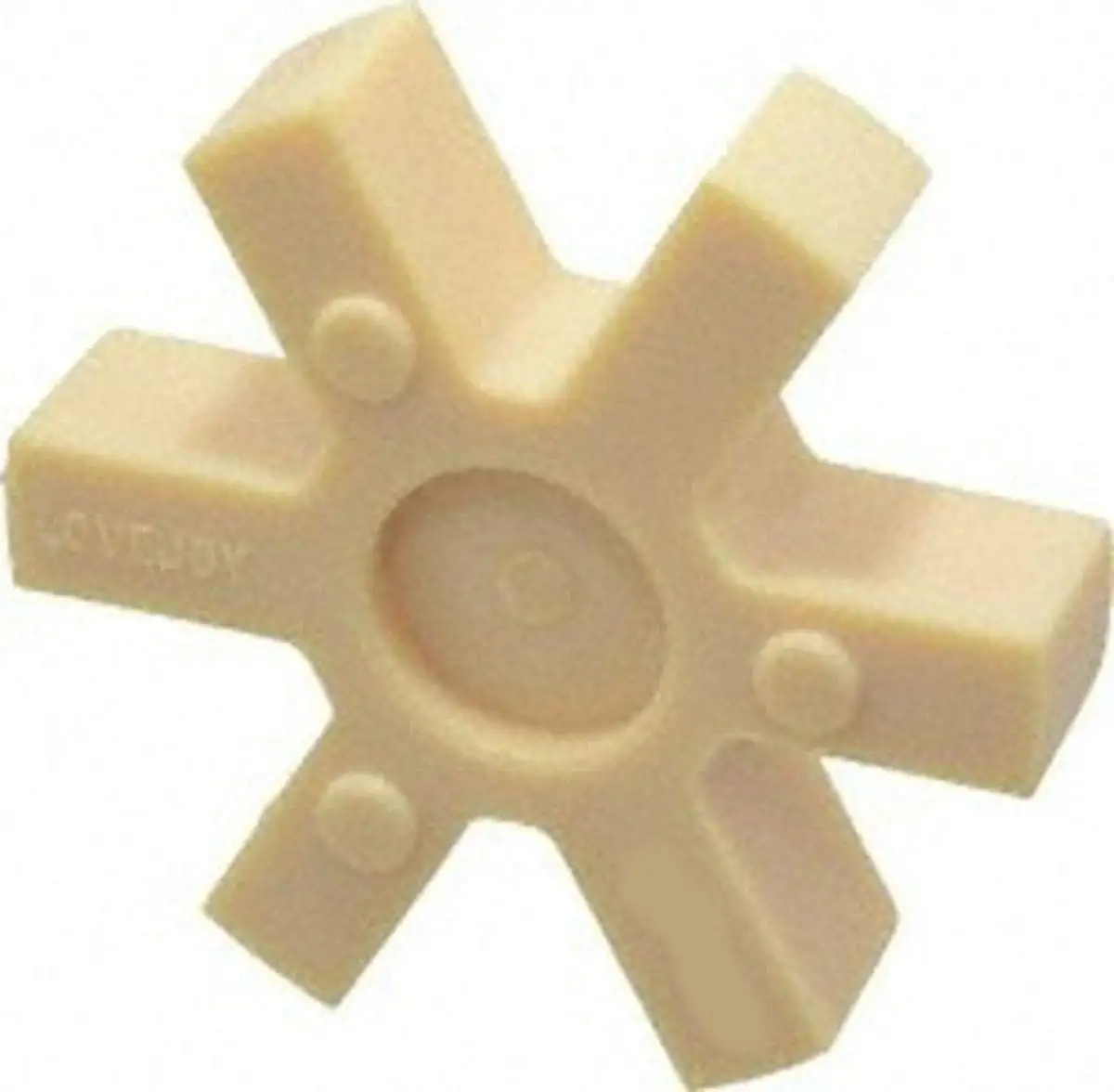Lovejoy 68514411494 jaw coupling spider is designed for torque transmission between two shafts, as well as protecting components from damage by dampening vibrations & shocks. This spider is a mechanical element used for motion control applications. It perfectly responds to temperature regulations, vibration, misalignment, chemicals, space limitation & high speeds and is ideal for the power generation, wastewater, food & beverage, pulp & paper, steel and marine industries.
Features:
- Lovejoy 68514411494 jaw coupling spider accommodates angular and parallel shaft misalignment for continuous duty electric motor driven machinery, as well as motion control, tensioning & vibration management applications.
- It has SOX nitrile rubber construction for ensuring excellent abrasion resistance, absorbing shock loads and protection against dirt, oil, sand, grease & moisture.
- It prevents metal to metal contact, ensuring less internal wear and delivering torque up to 417 inch-lb.
- This solid centre, elastomeric insert style spider is suitable for general power transmission applications where the BE dimension (distance between ends of driven and driving shafts) will remain fairly constant and will be capable of affording a suitable gap.
- The black coloured Lovejoy 68514411494 spider offers high dampening capacity & good chemical resistance
- It features 80 Shore A hardness, even under temperatures ranging from -40 degrees to 212 degrees Fahrenheit.
Compatible Accessories:
- Lovejoy LC Type Jaw Coupling Hubs: These hubs feature a fail-safe design with no metal to metal contact so that they perform even when the elastomer fails. They are suitable for applications having speeds over 1750 RPM.
- Lovejoy Coupling Collars: C Type and H Type collars provide great torque & bore capacity and feature radially removable elastomeric cushions for ensuring ease-of-maintenance. They have no metal to metal contact, thus eliminating the need for maintenance and providing resistance against dirt, sand, oil, moisture & grease.
Standards and Approvals:
Frequently Asked Questions:
Q. What is the difference between open centre & solid centre Lovejoy spider designs?
A. The open centre design of Lovejoy coupling spiders is suitable in close BE situations, where units must be positioned as closely together as possible. However, this design has no full-diameter support, as the spider's legs are joined only by a thin segment of material. It has speed limitations up to 1750 rpm for NBR and 3600 rpm for Urethane / Hytrel.
The solid centre design of Lovejoy spiders is suitable for general power transmission applications where the BE dimension will remain fairly constant and be capable of affording a suitable gap.
Q. What is the significance of the colours of Lovejoy spiders?
A. - Black - Lovejoy spiders with 80 Shore A hardness ensuring excellent damping properties.
- Yellow - Spiders with 92 Shore A hardness used in hydraulic applications.
- Red - Lovejoy coupling spiders with 95 / 98 Shore A hardness suitable for high torque applications.
- Green - Lovejoy spiders with 64 Shore D hardness for humid environments.
- Blue - Lovejoy spiders with 92 & 95 Shore A hardness for chemical resistance and high torque capabilities.
- Tan / Bronze - Lovejoy coupling spiders with 55 Shore D hardness to ensure excellent chemical resistance.
Q. How do you install a spider coupling?
A. - Before installing hubs on a shaft, slide a retaining collar onto the shaft.
- Insert a key into the keyway. Make sure that the key fits snugly in the keyway, with minimal side to side movement.
- Slide a hub on the shaft (over the key) and align the face of the hub with the end of the shaft.
- Use a calibrated torque wrench to tighten the set screws.
- Check alignment using either straight edge method or a dial indicator, taking measurements at four locations, 90 degrees apart.
- Wrap the spider around the hubs and insert a leg of the spider into each space between the coupling jaws.
- Align the pins on the side of the collar with the grooves in the spider.
- Recheck set screws for tightness and recheck the axial & angular alignment for accuracy.
- Remove any material and tooling away from the coupling and shaft. Install the appropriate coupling guard as per OSHA requirements.
 Change Country
Change Country


